6 Strategies for Increased Procurement Cost Savings


Increasing procurement cost savings is a common goal for every procurement department. However, this goal should extend beyond merely reducing the cost of the products you acquire.
Luckily, you have come to the right place.
Today, we will show you how you can increase your cost savings and transform your overall department’s financial health into a safe and secure bottom line that will allow you to procure efficiently.
To be fair, this is not a walk in the park. However, implementing the strategies we are about to discuss will set you on the right path to achieving this objective.
Without further ado, let’s start with the first strategy.
Embracing advanced procurement technologies is a straightforward path to better cost savings.
Investing in procurement automation tools, e-procurement, AI-driven analytics, and machine learning offers substantial benefits for your procurement department.
These tools not only streamline processes but also minimize errors and encourage data driven procurement. This, in turn, enhances your overall efficiency and leads to cost savings in the long run.
Moreover, technology introduces automation into the picture.
By automating various procurement processes, from supplier sourcing to payment processing, you can significantly reduce time and personnel requirements, directly reducing operational costs.
Let’s see how this works when you automate supplier sourcing.
According to McKinsey, manually completing a single supplier search takes about three months, involving both time and expenses for the experts handling it.
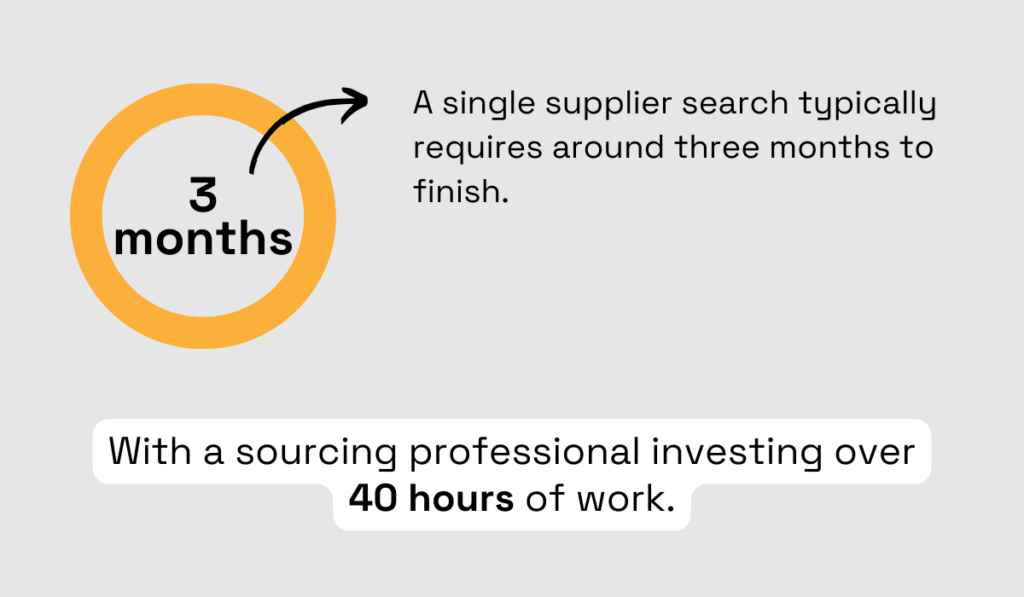
Illustration: Veridion / Data: McKinsey
With new tools leveraging artificial intelligence and machine learning, this time can be reduced by a remarkable 90%, translating into a matter of days or even hours.
That means you don’t have to pay for all those hours that sourcing professionals would usually take.
Implementing technology, such as e-procurement, can yield even more significant savings.
A survey by Wax Digital involving 200 professionals leveraging online procurement tools revealed that the savings derived from technology adoption could surpass the initial cost of products by an impressive 720%.
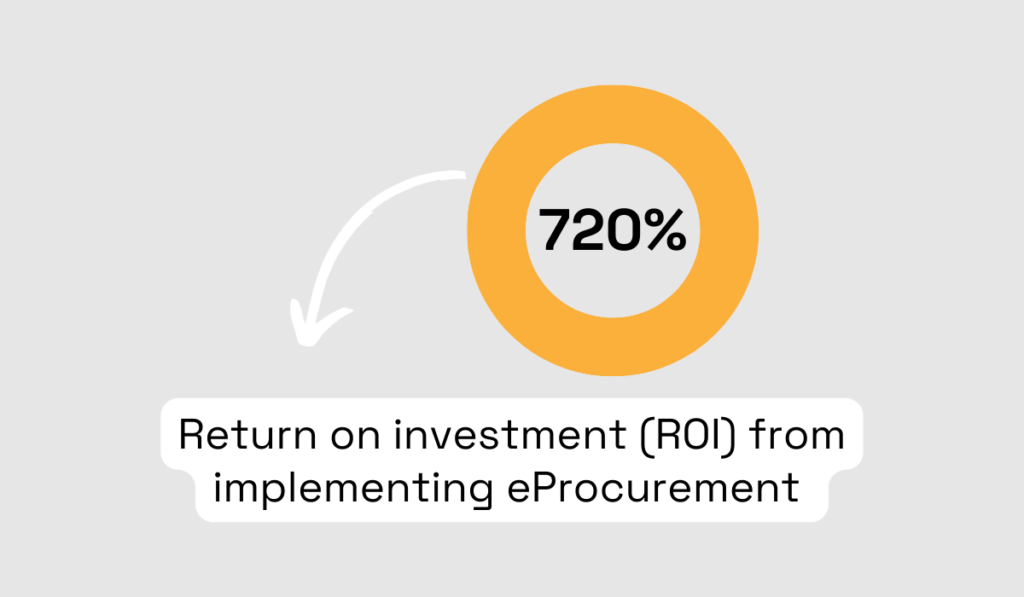
Illustration: Veridion / Data: Information Age
In other words, your return on investment could be remarkably high.
So, what makes e-procurement so cost-effective?
E-procurement platforms automate the entire procure-to-pay process, from raising purchase requisitions, creating purchase orders, and obtaining approvals to matching invoices with orders and invoice processing.
This makes the entire process more transparent, faster, and more efficient.
If we consider invoice processing, we can examine how automation increases cost savings more closely.
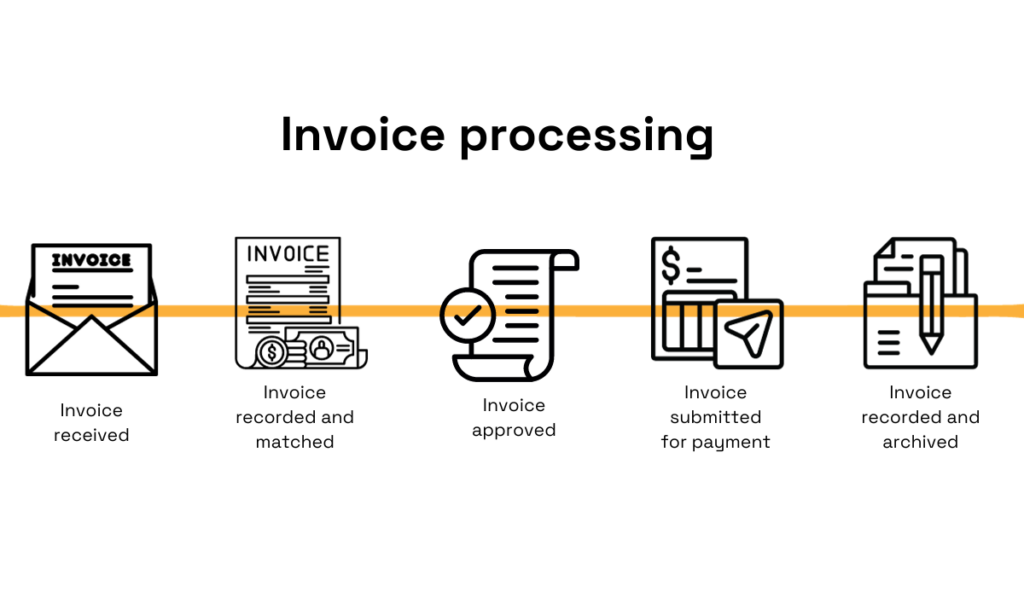
Source: Veridion
Manual invoice processing is resource-intensive and can cost up to $15 per invoice. However, automating this process can reduce costs to under $5.
Now, think about how many invoices you process monthly and calculate how much you could save with automation.
As you can see, technology and the automation it brings are the key drivers for increasing procurement cost savings. And this is not just a contemporary trend.
Technology and automation are set to reshape our future, impacting all processes, including procurement.
So, now is the right time to transform your procurement with technology.
Strategically choosing to diversify your supplier base is a decision that holds significant weight for improving cost savings.
First and foremost, when you decide to diversify your supplier base, you foster healthy competition among suppliers, ultimately driving down prices.
Sometimes, geopolitical events simply force you to do it. Albert Brenner from Altraco, an off-shore manufacturing company, experienced that.
The Trump administration’s Section 301 tariffs substantially increased our material costs, impacting our profit margins. We mitigated this by diversifying our supplier base beyond China, including countries like Vietnam and India. This diversification not only reduced our tariff burden but also made our supply chain more resilient to geopolitical fluctuations.
—Albert Brenner, Co-Owner, Altraco
As suppliers compete to offer the best value and secure contracts, you stand to gain tangible cost savings in the process.
However, the advantages extend beyond immediate financial gains.
Diversifying your supplier base is a robust risk mitigation strategy, especially in today’s business landscape characterized by supply chain disruptions from various factors like natural disasters, pandemics, wars, and economic crises.
Relying solely on a single supplier or those from the same region exposes your organization to vulnerabilities during disruptions, posing operational challenges and potentially increasing costs.
Consider the case of Gap Inc., a retail company heavily reliant on suppliers from one country—Vietnam.
Because of that, they faced unforeseen challenges and incurred significant losses due to supply chain disruptions caused by COVID-19.
Around 30% of Gap’s products come from Vietnam factories, so production was halted when the country was locked down.
Moreover, the ports were also congested, so the company couldn’t deliver and meet customer demands.
They lost around $300 million in sales and spent an additional $430 million on air freight that year. All because their supplier base was not diverse.
In contrast, those with diversified supplier bases were better equipped to survive unexpected events and maintain a more stable cost structure, even in unforeseen circumstances like the COVID-19 pandemic.
But every misfortune is a blessing in disguise, so this encouraged Gap to diversify its supplier base in 2022 and source from Mexico and Central America to cut down on lead times.
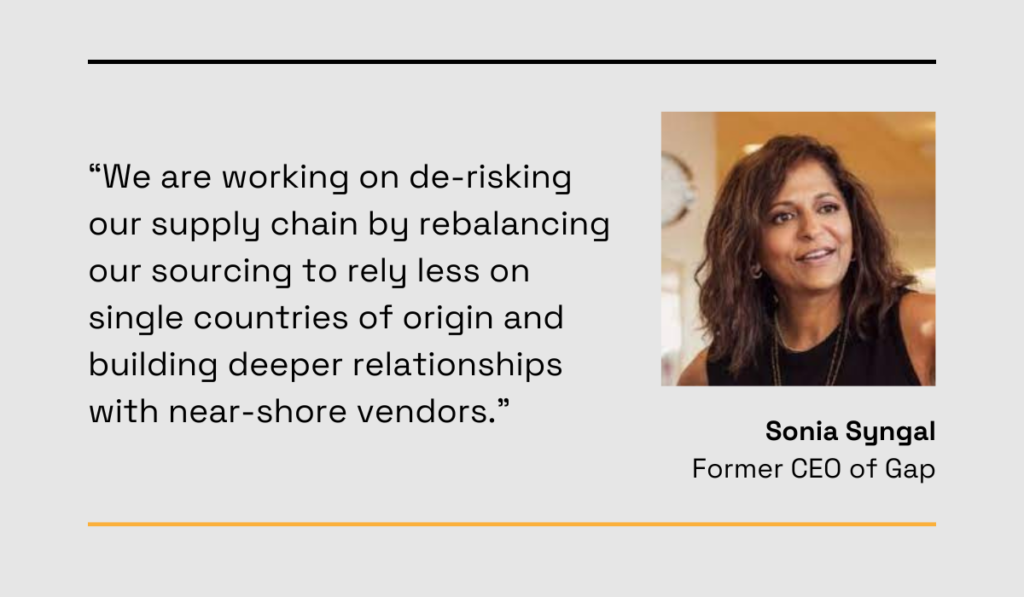
Illustration: Veridion / Quote from Supply Chain Dive
If you are wondering how you can diversify your supplier base, we have a solution.
With big data companies like our Veridion, you can quickly access a vast global database of suppliers, allowing you to create a shortlist of potential candidates in mere minutes.
Veridion provides near real-time data about more than 80 million suppliers globally. This wealth of information empowers you to make informed decisions when diversifying your supplier base.
Our data, accessed through Veridion’s complex search API, offers insights into company location, size, product specifications, classifications, and compliance data.
Moreover, Veridion will inform you about changes in a supplier’s activity, to help you mitigate potential risks.
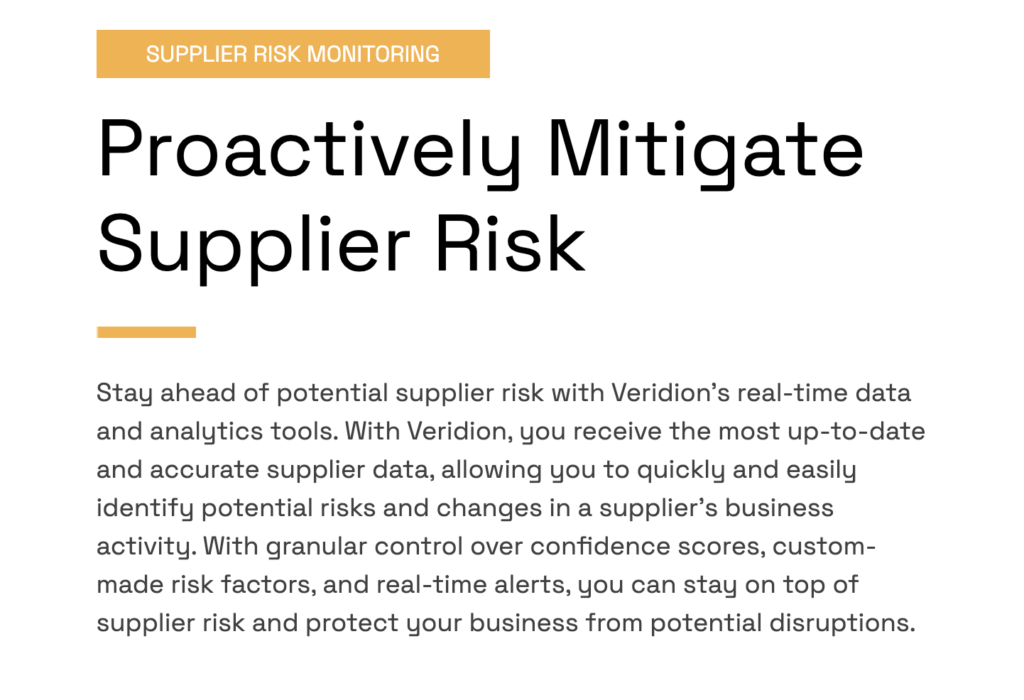
Source: Veridion
Finally, Veridion brings data on each supplier’s sustainability practices.
Implementing sustainable practices into your procurement is another strategy to increase your cost savings, so let’s continue in the next section.
Sustainability is achieved when a business minimizes or eliminates its negative impact on the environment, society, and the economy.
But beyond its environmental and social benefits, sustainability in procurement can also bring cost savings.
In fact, procurement stands out as one of the most important processes where sustainability can be effectively realized.
Sustainable practices you can implement in procurement include:
Some sustainable practices, like opting for energy-efficient products and services that reduce ongoing operational expenses, can result in immediate cost savings.
Similarly, if you actively work on reducing waste, you will reduce disposal costs, bringing you savings almost immediately.
But even if immediate cost savings aren’t apparent, implementing sustainable procurement practices brings numerous long-term benefits that, with time, turn into significant savings.
One such benefit is brand reputation.
In a world where customers are increasingly concerned about environmental and social issues, aligning your brand with sustainability fosters customer loyalty and trust.
This, in turn, boosts sales, market share, and overall brand resilience, contributing to sustained business success.
Consider the case of Patagonia, a company with the best reputation in America.
Its beloved status among customers results from Patagonia’s consistent nurturing of sustainable practices and continuous efforts to reduce its ecological footprint.
Patagonia achieves this by using recycled materials and even cultivating its own cotton.
Moreover, sustainability is interwoven into every organizational decision, including responsible purchasing practices and collaborations with suppliers who share their values.

Illustration: Veridion / Data: Patagonia
To recap, prioritizing sustainability is crucial in the contemporary business landscape.
Sustainable practices not only increase cost savings but also contribute positively to the world we inhabit.
When a business genuinely works for the planet’s and a worker’s benefit, customers recognize and appreciate it.
This enhances brand reputation and serves as a pathway to long-term savings. It’s well worth it.
Another highly effective strategy to increase your procurement cost savings is by establishing strategic supplier partnerships.
Unlike transactional engagements, when both sides get their fair share of the deal and that’s it, procurement is better off with relational ones, where each side commits to invest more in the relationship.
Naturally, these kinds of partnerships must be built on the pillars of trust, collaboration, and long-term commitment.
They also create a basis for ongoing value creation, going beyond simple cost considerations and adding quality, service, and innovation into the picture.
Below is a recap of how such partnerships can increase procurement cost savings:
| Favorable pricing agreements | Suppliers are inclined to offer competitive pricing and discounts to partners with lasting, mutually beneficial relationships. |
| Collaborative cost-saving measures | Suppliers with a deeper understanding of the organization’s needs can contribute valuable insights to streamline processes and reduce costs. |
| Innovation for cost-efficiency | Collaborating closely with suppliers encourages the exchange of ideas, leading to the development of more cost-effective solutions over time. This innovation ranges from process improvements to introducing more efficient products or new materials. |
However, it’s crucial to note that managing and nurturing these partnerships require ongoing efforts and resources.
Therefore, organizations need to invest in relationship-building activities, effective communication, and a shared commitment to achieving common goals.
One excellent example of a company that does precisely this is Procter & Gamble.
During one of their annual external business partner summits, their former chief purchasing officer, Rick Hughes, said:
“We expect the best from our business partners, and we are focused on growing long-term relationships that are sustainable, innovative, and create joint value.”
And P&G is a company that continually improves relationships with its suppliers and external partners.
One crucial thing they also do is recognize their top-performing suppliers and award them.
Such an approach makes the suppliers feel valued and encourages them to continue doing their best.
So, it isn’t surprising that the top-performing suppliers from 2008 are almost the same as in 2018. They continued to excel.
Procter & Gamble is real-life proof that strategic supplier partnerships, continual improvement, and collaboration are primary factors contributing to its status as one of the most successful companies globally.
And naturally, when you work with suppliers you can rely on, you can both ensure that agreements are mutually beneficial, which results in increased cost savings and better financial management.
Achieving cost savings in procurement goes hand in hand with operational structure.
A way to bring that structure to procurement is by establishing clear policies and standard operating procedures (SOPs).
Standardized purchasing workflows will give you more control over costs and enable you to manage your budget better.
Let’s see how.
One significant method for achieving cost savings is maverick spend prevention.
Since purchasing outside agreed-upon contractual agreements can account for up to 80% of total spending, maverick spending is a critical area to address if you want to increase cost savings.
What’s more, such ad-hoc purchases outside of negotiated agreements are more costly than purchasing from reliable suppliers in bulk.
The solution is clearly defining authorized purchasing channels, suppliers, and terms and sharing this information within the department and across the organization to prevent maverick spending.
In addition, clear procurement policies and standardized purchasing workflows achieve two more things—they streamline the procurement process and ensure your procurement complies with legal and regulatory requirements.

Source: Veridion
Both are crucial for increasing cost savings. Let’s see why.
When you clearly define the steps involved in procurement, from requisition to approval and purchase, you can reduce ambiguity and delays.
As we already said today, technology and automation are essential in this context. Their efficiency saves time by automating some tasks and provides visibility into the procurement process.
It also minimizes the risk of unnecessary expenditures that would happen if your department didn’t follow the standardized procurement workflow.
Ensuring compliance with legal requirements is another way to achieve long-term cost savings.
Namely, by clearly defining ethical standards, legal obligations, and risk mitigation measures, you safeguard yourself from legal challenges.
This, in turn, prevents legal disputes, associated expenses, and other potential financial losses.
As you can see, you can increase your procurement cost savings in many ways as long as clear procurement policies are in place.
Preventing maverick spending, standardizing workflows, and ensuring compliance—each aspect contributes to improved financial management and ultimately enhances your overall cost savings.
The last but equally important strategy for increasing cost savings is to invest in your employees’ development.
After all, it is only with a great team of skilled professionals who can efficiently manage budgets, perform spend analysis, and identify cost-saving opportunities that you can enhance overall cost savings.
To make sure that your employees are continually developing their skills and knowledge, you have to educate them on the best procurement practices.
One such best practice in today’s procurement landscape is leveraging technology and automation to streamline procurement.
If you decide to transform your procurement with technology, the first step is to train your staff to use those tools effectively.
One of the greatest benefits of procurement automation tools is their ability to generate a vast amount of data for spend analysis or demand forecasting.
That said, you must teach your procurement team how to perform such analyses.
Most importantly, you must train them to present insights to stakeholders and suppliers and use these insights to negotiate better deals.
A more skilled and adaptable procurement team will also be capable of identifying and implementing cost-saving opportunities, ultimately leading to increased cost savings.
Moreover, only highly skilled procurement professionals will be able to manage procurement in a constantly changing landscape.
Overall, the commitment to ongoing employee development in procurement is an investment that pays dividends in terms of cost savings, enhanced efficiency, and the ability to thrive in an ever-evolving landscape.
By focusing on continuous employee education in new processes and technologies, you will cultivate a highly skilled and adaptable procurement team that will significantly contribute to overall cost savings.
The six strategies we covered today are a clear path to increased procurement cost savings.
While implementing them may demand some effort, the resulting benefits in terms of cost savings are undoubtedly worthwhile.
So, embrace technology, set clear procurement policies, and invest in continuous team training.
Combine this with diversifying your supplier base and establishing strategic and long-term partnerships with the suppliers in question.
And finally, go sustainable to increase your brand reputation and ensure long-term cost savings.
Together, these strategies promise both immediate and enduring cost savings, positioning your procurement for sustained success.